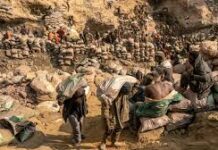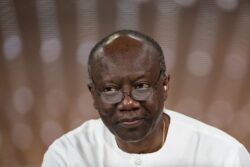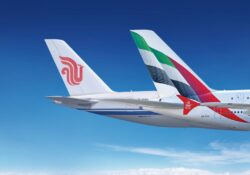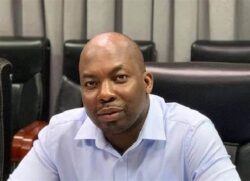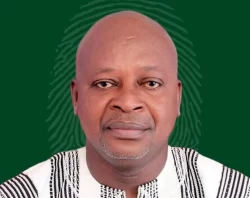It had been almost four years since my last misadventure with a drone, and yet, much like the pain of breaking up with a high school sweetheart, I could still feel the residual pangs of agony every time my heartbeat. Whilst I can certainly forgive anyone for seeing the comedic moments in the story I am about to recall, I can’t impress upon the reader enough how this incident, at the moment it occurred, was nothing short of an absolute tragedy in my life.
In early 2019, after some mild success in my fledgling consulting practice, I rewarded myself by finally getting a drone. Indeed, the little boy who had harboured the idea of becoming an airline pilot for a brief period at the age of 7 before becoming fully enamoured by video games could still be appeased with this piece of technology which seemed to satisfy both ebullient passions. When a Yuneec Typhoon H drone became available for sale through a friend, I could not resist purchasing it immediately.
It took me over 30 minutes of playing with the gadget to master its basic movements. After two weeks, I felt very comfortable performing maneuvers of varying difficulties with often, but not always, successful outcomes. The only problem I had was the obstacle avoidance technology, which prevented me from performing what I felt would be more daring, exciting and dynamic tricks. It was time to turn that functionality off completely.
When I did, I felt absolute freedom. My flights got riskier and certainly more fun. The potential of crashing the expensive equipment left me unfazed and perhaps even gave me a rush of adrenalin. With each successful flight came more and more confidence.
On one of my daring routine flights, a group of 3 children in the neighbourhood noticed my drone from a distance and immediately drew near to observe it. Ever the consummate showman, I decided to throw all humility out of the window and perform some elaborate tricks.
With each gimmick, my audience grew more enthralled and craved more. In my quest for more and more adulation, the difficulty of my tricks increased until I was in unknown territory. One last trick for the children: I’ll be done for the day. I did a quick figure eight with the drone and decided to fly very close to the second floor of an incomplete building just about 50 meters away.
Crack! One of the Typhoon’s rotating blades struck the building. The children gasped! I looked up from my controls at the drone. Disoriented, I pulled back. A second blade struck the building. “Oh no!” blurted a little girl with the group as the drone started spiralling to the ground. Crash. It was over. “Can you fix it?” she asked. “Yes, I retorted”, optimistically as I walked over to pick up the remains of my once airborne craft. In truth, I knew my flying days were behind me for a while, at least until I could afford to purchase another drone.
After four years, this day had finally come. I was going to a secluded park a few minutes off Atomic Junction Road to meet Clifford Agoe, Ghana’s top FPV drone pilot, by a mile. He had just finished shooting a few captivating scenes for a music video for the King Promise song, Terminator and was eager to get me back into flying my drones.
In his attempt to encourage me to start flying again, he thought it would be a good idea for me to meet a few like-minded people this Saturday morning.
Like an anointed prophet, he was right. Seeing other drone enthusiasts flying that morning got me excited again. Making their acquaintance and sharing drone stories was the most fun I had had in a while, with the most memorable being that of one Gameli Agboada, a Geomatic Engineer, who had a hilarious story of losing his drone in a village and eventually finding it after several months with the help of locals. His story can be read on www.gameliagboada.blogspot.com under “The Chronicle of the Returnee: His Royal Airborne-ness I”.
Our conversations quickly moved to the possible applications of drone technology in the world before us and its potential implications for agricultural production in the future.
With this article, I will share some of the highlights of our conversation and the revelations therein.
Crop Monitoring and Assessment
There is great potential for drones to revolutionize the field of agriculture by enabling efficient and accurate crop monitoring and assessment. Drones can capture high-resolution aerial imagery of farms and agricultural fields when equipped with advanced imaging technologies such as multispectral and thermal cameras. These images may provide valuable insight into crop health, growth patterns and potential issues.
The sagacious farmer of the future could utilize remote sensing techniques combined with drones to detect subtle variations in plant health, nutrient levels, water stress and pest infestations that might not be visible to the naked eye.
This information would allow the farmer to make informed irrigation, fertilization, and pest control decisions.
The inevitable outcome of such an application is that this leads to optimized resource allocation and increased yields.
With the ability of drones to cover large areas quickly and cost-effectively, this application would enable frequent monitoring throughout the growing season.
I predict that drones will emerge as an indispensable tool in agriculture, enhancing precision farming practices and contributing to sustainable and productive crop management.
Aerial Seeding
Drones equipped for aerial seeding could offer unparalleled flexibility in navigating challenging terrains, inaccessible areas, and uneven landscapes.
By precisely dispersing seeds from above, a farmer could utilize drones to ensure uniform coverage and planting density, thus mitigating issues related to uneven distribution encountered in manual or machinery-based approaches.
The speed and efficiency of drone-based seeding enable the rapid reforestation of large areas, reducing labour costs associated with traditional planting methods.
Additionally, with the ability to program drones to follow GPS-guided flight paths, the farmer can expect more accurate and consistent seed placement, enhancing germination and yield rates.
Spraying and Pest Control
One of the most significant issues that every farmer needs to master successfully is pest control, with drones emerging as a game-changing tool in this regard.
Equipped with specialized spraying systems, drones can accurately and efficiently apply pesticides, herbicides, and fertilizers to crops. This targeted approach reduces chemical waste, minimizes environmental impact, and decreases human exposure to potentially harmful substances. Drones can navigate fields precisely, accessing challenging or uneven terrains that might be difficult for conventional machinery.
Using GPS technology, drones can create optimized flight paths, ensuring uniform coverage and avoiding overlapping or missed areas. This level of precision enhances the effectiveness of pest control measures and reduces the overall quantity of chemicals required, promoting sustainable farming practices while safeguarding crop health and yield.
Adopting drones for spraying and pest control has transformative effects on agriculture. Responding quickly to pest outbreaks and disease threats is crucial in maintaining crop productivity.
Drones enable rapid deployment, allowing farmers to treat affected areas promptly and prevent the spread of infestations. Moreover, drone-based spraying reduces the need for large machinery, minimizing soil compaction and preserving soil health.
This technology also addresses labour shortages, as drones can cover significant acreage efficiently, saving time and resources. By minimizing human exposure to chemicals and decreasing the environmental impact of chemical applications, drones contribute to more environmentally friendly and sustainable agricultural practices.
Livestock Monitoring
With the global demand for animal products steadily rising and the emphasis on animal welfare increasing, efficient and effective livestock management has become paramount. Drones with advanced imaging and sensing technologies are now invaluable tools for farmers and ranchers. These drones enhance the ability of the farmers to monitor, care for, and optimize the well-being of their livestock.
Traditional methods of livestock monitoring often require extensive labour and resources, which can lead to delays in identifying issues such as disease outbreaks, injuries, or distress among the animals. Drones equipped with high-resolution cameras and thermal sensors provide a bird’s-eye view of the entire herd, allowing for rapid identification of anomalies.
Real-time monitoring enables farmers to detect signs of illness or injury earlier, facilitating timely intervention and reducing the risk of potential outbreaks. This approach not only improves animal health and welfare but also minimizes the need for manual inspections, saving time and resources.
Grazing Management and Behavior Analysis
Drones equipped with GPS and mapping technology are instrumental in optimizing livestock grazing patterns. They can track the movement of animals across the grazing area, helping farmers manage grazing rotations effectively. By preventing overgrazing and ensuring proper distribution of grazing pressure, drones contribute to maintaining healthy pastures and preventing soil degradation.
Drones can capture behavioral data, offering insights into animal interactions, stress levels, and social dynamics. This information can guide farmers in making informed decisions about grouping, housing, and managing livestock populations, ultimately improving animal welfare and productivity.
Search and Rescue Operations
In extensive ranching areas, locating individual animals needing medical attention or rescue can be challenging. Drones with thermal imaging technology can quickly find animals in distress, even in rugged terrain or low-light conditions. This capability enhances the response time for urgent situations, such as a calving cow needing assistance or a lost animal requiring retrieval. By aiding in search and rescue operations, drones reduce the risk of losses and ensure the overall well-being of the livestock.
Reducing Stress and Labor Demands
Traditional livestock management practices often involve herding, manual counting, and handling, which can cause stress to the animals and labour-intensive tasks for the farmers. Drones, on the other hand, offer a non-invasive approach to monitoring. They can cover large areas swiftly, minimizing the need to disturb the animals. This not only reduces stress and anxiety among livestock but also eases the workload of farmers, allowing them to focus on more strategic aspects of their operations.
Drones are transforming how livestock is managed, providing farmers and ranchers with advanced tools for precision monitoring, efficient grazing management, and rapid response to emergencies. By offering real-time insights into animal health, behaviour, and welfare, drones improve productivity, reduce environmental impact, and enhance animal care practices.
As technology continues to evolve, the integration of drones into livestock management promises a more sustainable and compassionate approach to meeting the global demand for animal products while upholding the highest standards of animal well-being.
Field Mapping and Planning
Agriculture has entered a new era of innovation by integrating drones into field mapping and planning processes. These versatile aerial vehicles are reshaping how farmers approach land management, crop cultivation, and resource allocation.
Drones equipped with advanced imaging and data collection technologies have emerged as indispensable tools, providing farmers with detailed insights into their fields’ topography, soil health, and vegetation distribution. This revolution in precision agriculture is not only enhancing productivity but also promoting sustainable land management practices.
Accurate field mapping is the cornerstone of effective agricultural planning. Drones with GPS and high-resolution cameras can capture detailed aerial imagery, creating precise and up-to-date maps of farming landscapes. This precision mapping reveals variations in soil composition, moisture levels, and elevation, enabling farmers to tailor their strategies to specific areas within the field. By understanding the nuances of their land, farmers can make informed decisions regarding irrigation, fertilization, and planting density, optimizing resource allocation and maximizing crop yield.
Drones are transforming the way farmers plan and manage their crops. With the ability to capture data on crop health, growth rates, and pest infestations, drones provide a holistic view of field conditions. This data allows farmers to create precise crop zoning strategies, allocating specific crops to areas where they thrive best. By identifying potential issues early on, such as nutrient deficiencies or water stress, farmers can take proactive measures to address them, preventing yield losses and enhancing overall crop quality.
The integration of drones into agriculture is propelling the adoption of sustainable practices. Drones equipped with multispectral and thermal sensors can identify areas of excess or inadequate irrigation, helping farmers optimize water usage and reduce wastage. By precisely targeting fertilization based on soil data, drones minimize the overuse of chemicals, mitigating environmental impact and preserving soil health. This sustainable approach benefits the environment and contributes to long-term profitability by cutting input costs.
Traditional field surveys and mapping involve substantial time and labour investments. Drones offer a transformative solution, covering large areas quickly and accurately. The data collected by drones is processed into actionable insights, streamlining decision-making processes. This efficiency saves farmers valuable time and resources, enabling them to focus on strategic planning and other aspects of farm management.
Sages’ Perspective
If “Adaptability is about the powerful difference between adapting to cope and adapting to win.” as world-famous innovation researcher Max McKeown posits, it’s time for us to embrace the upcoming change if Africa is meant to win.
The author is a software developer and technology & business development consultant with over 19 years of experience in the industry. He specializes in helping small and medium-sized businesses leverage technology to drive rapid revenue growth and maximize market share.
[email protected] +233 507409529




